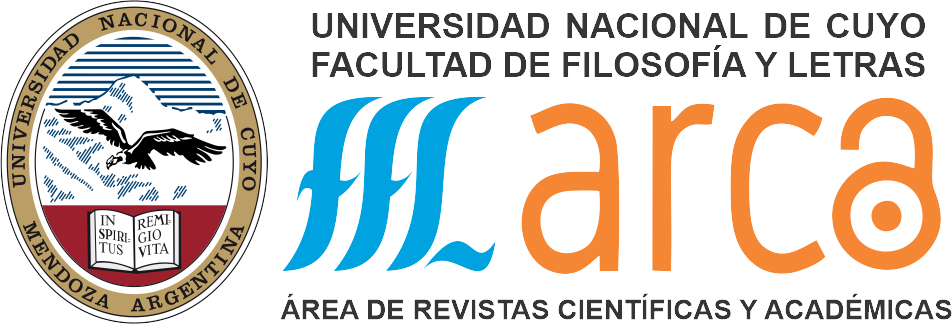La circulación de la producción científica vista desde la “periferia”
un estudio de caso sobre la colaboración interinstitucional de la UNSAM (2018)
DOI:
https://doi.org/10.48162/rev.48.044Abstract
Según da cuenta el informe general de gestión de la Universidad Nacional de San Martín (UNSAM) se aprobaron, solo en el año 2018, 62 nuevos convenios internacionales entablados con instituciones de 25 diferentes países bajo los formatos de acuerdos marco, específicos y específicos de movilidad. Ahora bien, ¿qué características tienen estas acciones? Y, más importante aún, ¿hacia qué vías de circulación de la producción científica apuntan las mismas?
Este es el punto de partida de un trabajo que procura contribuir a generar un conocimiento radiográfico del mapa de circulación que trazan los acuerdos de colaboración interinstitucional convenidos por la UNSAM en el año 2018 y en materia de investigación.
A partir del relevamiento de datos sobre tipos de convenios entablados, naturaleza de las instituciones contrapartes y ubicación geográfica de las mismas, se pudo constatar empíricamente que, mirando la geolocalización de los organismos/instituciones científico-tecnológicas contrapartes, el grueso de estos se encuentran emplazados en el continente europeo. En este escenario, la dirección de la circulación apuntó de modo contundente hacia una internacionalización de las relaciones interinstitucionales signadas por países que podríamos llamar socios frecuentes de la UNSAM: Francia, Alemania y España.
Riferimenti bibliografici
ALBORNOZ, M y OSORIO (2018). El estado de la Ciencia. Principales Indicadores de Ciencia y Tecnología Iberoamericanos / Interamericanos. Buenos Aires: RICYT
BARSKY, O. (2014). La evaluación de la calidad académica en debate: los rankings internacionales de las universidades y el rol de las revistas científicas. Buenos Aires, Ed. Teseo, Universidad Abierta Interamericana.
BEIGEL F., GALLARDO O, y BEKERMAN, F. (2018). Institutional expansion and scientific development in the periphery. The structural heterogeneity of Argentina’s academic field (1983-2015). Minerva. A Review of Science, Learning and Policy, 56(3) pp. 205-331. https://doi.org/10.1007/s11024-017-9340-2
BEIGEL, F y BEKERMAN, F. (Coords.) (2019). Culturas evaluativas. Impactos y dilemas del Programa de Incentivos a Docentes-Investigadores en Argentina (1993-2018). Buenos Aires: CLACSO/IEC-CONADU.
BEIGEL, F. (2018). Las relaciones de poder en la ciencia mundial. Un anti-ranking para conocer la ciencia producida en la periferia. En Revista Nueva Sociedad. Nº 274, 13-28. https://www.nuso.org/media/articles/downloads/TG.Beigel_274.pdf
BEIGEL, F. (2019). Indicadores de circulación: una perspectiva multi-escalar para medir la producción científico-tecnológica latinoamericana. En Ciencia, Tecnología y Política, 2(3). https://doi.org/10.24215/26183188e028
BEIGEL, F. y ALGAÑARAZ (2020). Nuevos indicadores para reconocer las modalidades de interacción social de la universidad y coproducción de conocimientos. Propuestas y alcances del Manual de Cuyo. En Papeles del Observatorio N° 18. Observatorio Iberoamericano de la Ciencia, la Tecnología y la Sociedad (OCTS) de la Organización de Estados Iberoamericanos (OEI). Buenos Aires.https://observatoriocts.oei.org.ar/wp-content/uploads/2020/11/Papeles-18-Web-FINAL-DEF.pdf
BENITEZ DE VENDRELL, B. (2017). El presente de la comunicación científica. Revista La Rivada. Vol. 5, N° 8, pp. 1-19.
CEBRELLI, A. y ARANCIBIA, V. (2017). Los paisajes de la crisis. Los desafíos del campo científico en la Argentina neoliberal. Cuadernos de ciencias sociales, N° 8, vol 6, pp. 45-59: http://revistas.unne.edu.ar/index.php/dpd/article/view/2369
GUÉDON, J.C. (2011). El acceso abierto y la división entre ciencia “principal” y “periférica”. En Crítica y Emancipación, (6): pp. 135-180.
HEILBRON, J (2002). La bibliométrie, genèse et usages. Actes de la recherche en sciences sociales. Vol. 141-142, pp. 78-79.
HERNÁNDEZ, P.; NAVARRO CERDA, A. B. (2011). Internacionalización de la educación superior. Aprendizaje institucional en Baja California. En Revista de la educación superior. Vol. XL (3), Núm. 159, pp. 47-56.
KLEICHE-DRAY, M., VILLAVICENCIO, D. (Coords.) (2014). Cooperación, colaboración científica y movilidad internacional en América Latina. CABA: CLACSO.
KREIMER, P; LEVIN, L; JENSEN, P (2011). Popularization by Argentine researchers: the activities and motivations of CONICET scientists. Public Understand. Sci. N° 20, vol. 1, pp. 37–47
LIBERATORE, G., et al. (2020). Circuitos de circulación de la producción científica de la Universidad Nacional de Mar del Plata en la corriente principal: análisis de los hábitos de publicación (Issue May). https://doi.org/10.13140/RG.2.2.23361.17760
LÓPEZ, M.P y TABORGA, A. M (2013). Dimensiones internacionales de la ciencia y la tecnología en América Latina. Mirador Latinoamericano. Núm. 56, pp. 27-48.
OLLARVES, M., MIQUILENA, M. (2011). Importancia de los convenios en la internacionalización de los doctorados de la Universidad del Zulia. Ominia 17(3), pp. 49-67.
SCHWARTZMAN, S. (2009). Nacionalismo versus Internacionalismo en las políticas de formación de recursos de alto nivel. En Didou Aupetit, S., y Gérard, E. Fuga de cerebros, movilidad académica y redes científicas. Perspectivas latinoamericanas. México: UNESCO-IESALC.
UNZUÉ, M. y ROVELLI, L. (2017). Cambios, tendencias y desafíos de las políticas científicas recientes en las universidades nacionales de Argentina. Nueva Época, vol. 42, pp. 242-261. http://www.scielo.org.mx/pdf/tla/v11n42/1870-6916-tla-11-4200242.pdf
























